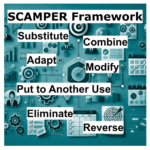This can be a game changer for innovation and speed. New technologies, shifting customer expectations, and evolving market trends demand that businesses stay nimble and responsive to thrive. Traditional development models can struggle in this environment, often leaving teams bogged down by rigid plans and long release cycles. This is where Agile methodology shines, transforming how products are developed by emphasizing flexibility, collaboration, and a commitment to delivering real value.
Let’s dive into why Agile matters in product development and how it can be the difference between a product that just meets expectations and one that redefines the market.
1. Agile responds to change, not resists it
One of Agile’s core principles is to welcome changing requirements, even late in development. In traditional development approaches, changes can cause major disruptions, leading to frustration, missed deadlines, and soaring costs. Agile embraces these changes as opportunities for improvement, encouraging teams to be responsive and adaptable.
By working in short, iterative cycles (sprints), Agile teams can refine their approach based on ongoing feedback. This adaptability is crucial in a world where customer preferences and market needs are constantly evolving. Agile isn’t just about building a product—it’s about building the right product.
2. Collaboration is at the heart of Agile
Product development isn’t a one-person job; it’s a team sport that thrives on collaboration. Agile prioritizes cross-functional collaboration, bringing together product managers, designers, developers, and testers to work as one cohesive unit. In an Agile environment, everyone is aligned on a shared goal and has a voice in how to achieve it.
Regular meetings, such as daily stand-ups and sprint planning, ensure that everyone stays on the same page, with clear visibility into progress, obstacles, and upcoming priorities. This kind of transparency and open communication enables teams to address issues in real-time, fostering a collaborative culture where everyone contributes to the product’s success.
3. Faster time-to-market and continuous delivery
With Agile, speed is not just a goal; it’s built into the process. By breaking down development into smaller, manageable chunks, Agile teams can deliver features incrementally, providing value to customers faster and more consistently. This continuous delivery approach means that instead of waiting for months or even years for a finished product, customers can start benefiting from its features sooner.
For businesses, this faster time-to-market can be a game-changer. Not only does it allow for quicker feedback and iteration, but it also means that companies can stay ahead of competitors and capture market share early. With Agile, it’s not about perfection on the first try; it’s about delivering value quickly and improving from there.
4. Agile drives a culture of continuous improvement
Agile doesn’t just optimize processes; it fosters a mindset of continuous improvement. At the end of each sprint, teams hold retrospectives to reflect on what worked, what didn’t, and how they can improve in the next iteration. This iterative feedback loop empowers teams to learn from their experiences and make incremental improvements to their workflow, ultimately boosting productivity and morale.
This culture of continuous improvement extends beyond just development; it becomes a core part of the company’s DNA. When every team member feels empowered to voice their insights and see changes based on their feedback, the whole organization becomes more resilient, adaptable, and innovative.
5. Customer-centricity is embedded in Agile
At its heart, Agile is all about delivering value to the customer. By frequently testing and refining features based on real user feedback, Agile teams can ensure that they are building products that truly meet the needs of their users. This customer-centric approach enables companies to avoid the pitfalls of developing in isolation and instead creates a constant dialogue with the end user.
With Agile, customer feedback is not an afterthought but an integral part of the process. This results in products that are more aligned with user expectations, leading to greater satisfaction, loyalty, and advocacy from customers. In a competitive landscape, a customer-focused product is a company’s most valuable asset.
6. Agile reduces risk and increases project success rates
Because Agile involves frequent check-ins, testing, and course corrections, it significantly reduces the risk of project failure. Traditional “waterfall” models often rely on rigid timelines and heavy upfront planning, which can create challenges if unexpected changes arise. Agile’s flexibility allows teams to identify and address issues early, lowering the likelihood of costly setbacks.
Studies have shown that Agile projects have a higher success rate compared to traditional projects, thanks to their iterative nature and emphasis on collaboration. By the time the final product is ready, Agile teams have already incorporated user feedback, addressed technical challenges, and refined their approach, leading to more successful project outcomes.
7. Empowering teams and boosting morale
Agile isn’t just a methodology; it’s a way of working that empowers teams. By giving teams autonomy, responsibility, and a voice in the development process, Agile fosters a sense of ownership and pride in the product. Teams aren’t just following orders—they are actively shaping the product, solving problems, and contributing to its success.
This empowerment has a direct impact on team morale and engagement. Agile environments are often more fulfilling and rewarding for team members, leading to higher productivity, lower turnover, and a stronger, more innovative culture. When people feel valued and empowered, they are more motivated to go the extra mile, and that shows in the quality of the product.
Remember …
Agile is more than a methodology—it’s a mindset.







